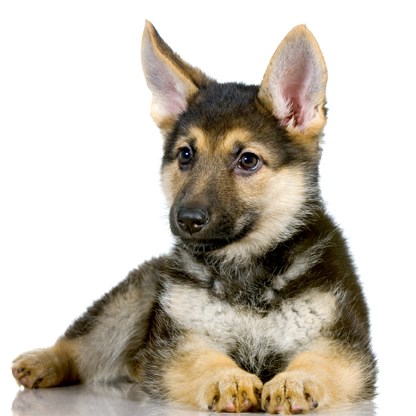Obedience training is a dog owner's first line of defence, and offence, when it comes to having a well-behaved dog.
Obedience training is the foundation on which you can build a positive relationship and it is a great way to open up the lines of communication between an owner and dog.
But just the act of participating in an obedience class is not enough to guarantee your dog will in fact be a well-behaved and welcomed member of canine society. The skills you learn in obedience classes are meant to be used throughout your day, not just in class, to build on that foundation so that you can shape your dog's behaviour and create the dog that you want. In all obedience classes there are basic commands that are taught. If you are lucky, your chosen trainer will also add a few extras that will be useful. The basics are "Sit," "Down," "Heel," "Recall" (come when called), "Stay" (wait) and "Stand." Some bonus commands would be "Walk nice" (walking on a loose leash, not in heel), "Go say hi" (greeting a friendly stranger or another dog on command), "Go to your bed and lie down" and "Watch me" (focused eye contact).
In a structured obedience class distractions are managed so that dogs can learn these commands easily when prompted and rewarded with food. The goal is to take what has been learned in the class and apply it to everyday life.
Learning to sit in the classroom turns into sitting for meals, sitting for the leash to be attached, sitting before going out the door and then sitting again once we are out the door. The list really is endless and "Sit" is a very useful management tool when used effectively and thoughtfully.
"Down" in the classroom turns into down on the mat for a chew toy, down on your bed when guests arrive, down when we stop and chat with someone on the street. "Down" can also be a default time-out command when your dog needs to manage its behaviour a bit more when "Sit" isn't working.
When I teach a "Heel" command, it's with the understanding that it is a controlled walk, meaning the dog is at my lefthand side, his shoulder in line with my knee. When I stop walking, my dog automatically sits. This is different than "Walk nice," which means the dog can walk in front, behind or beside me - it just can't pull. When I stop walking, it does not have to sit. Heeling in the classroom around pylons and other dogs turns into heeling when walking out the front door, heeling across intersections, heeling when a person is walking or jogging towards us. When a dog is not heeling, it can walk calmly on a loose leash.
The recall command is a very important one and many dog owners rush this command, meaning they tend to practise it far too early in the learning process. It takes months, and sometimes years, to develop a reliable recall and can never be overtrained. Learning the recall command in the classroom with minimal distractions can turn into coming inside the house from the backyard and sitting for a treat or meal. The recall command can be used when a dog stops to sniff something. The moment it lifts its head, it is called away from that spot to sit in front of you for a treat.
Recall can also be used when a dog greets another dog or person. Once the greeting is over the dog is called away and sits for a treat.
These are all easy ways to practise and reinforce all of your obedience commands to ensure they are reliable and shape your dog's behaviour.
Finally, obedience training is not just for puppies or young dogs but for dogs of all ages. Don't let that old wives' tale deter you from adopting an older dog ... you can teach an old dog new tricks!
Joan Klucha has been working with dogs for more than 15 years. [email protected].



